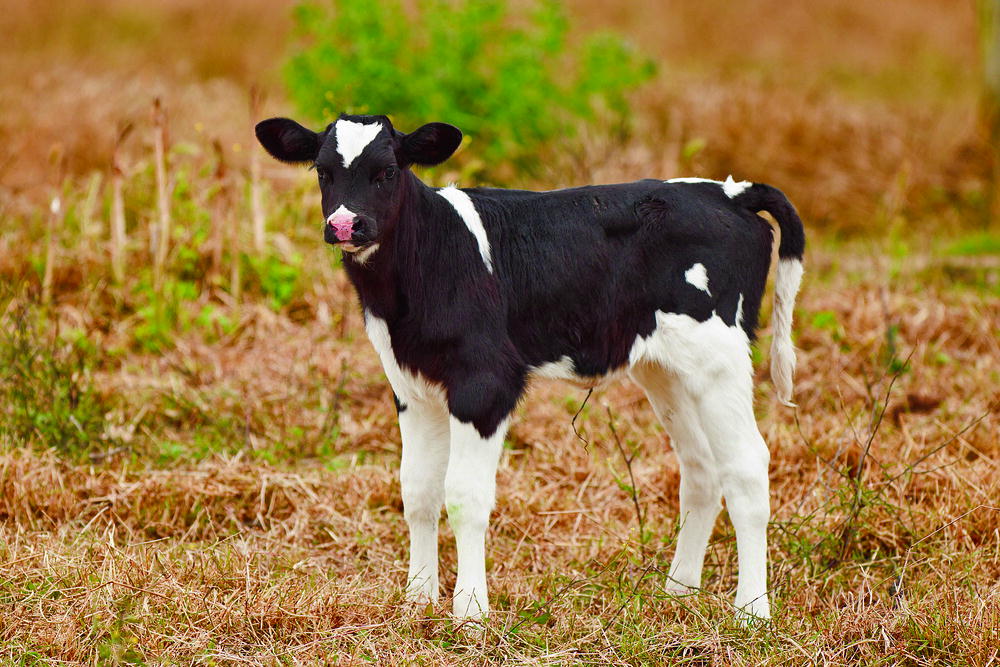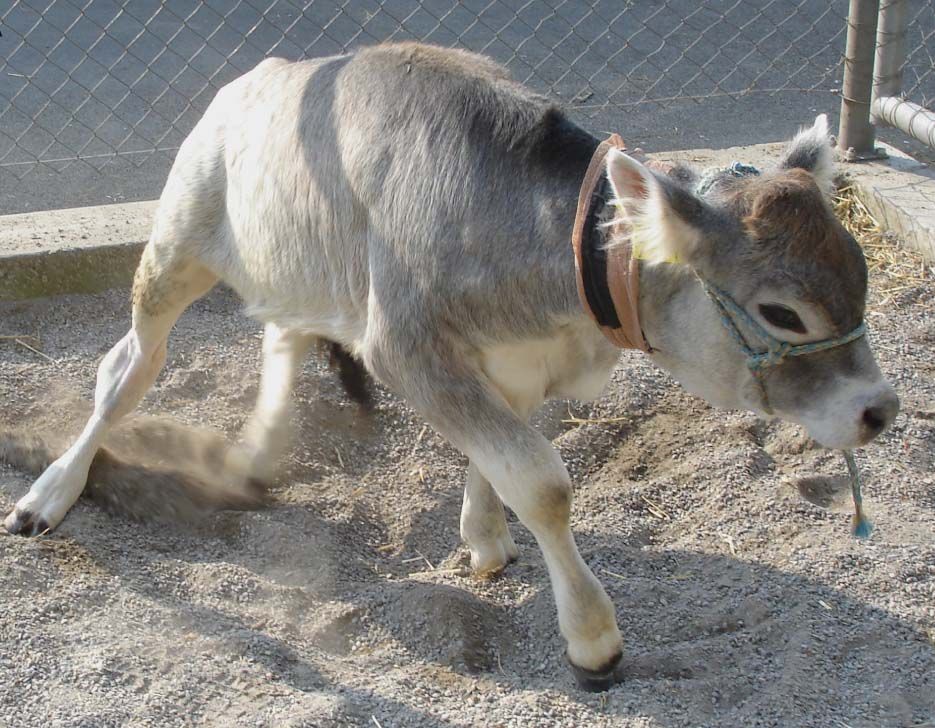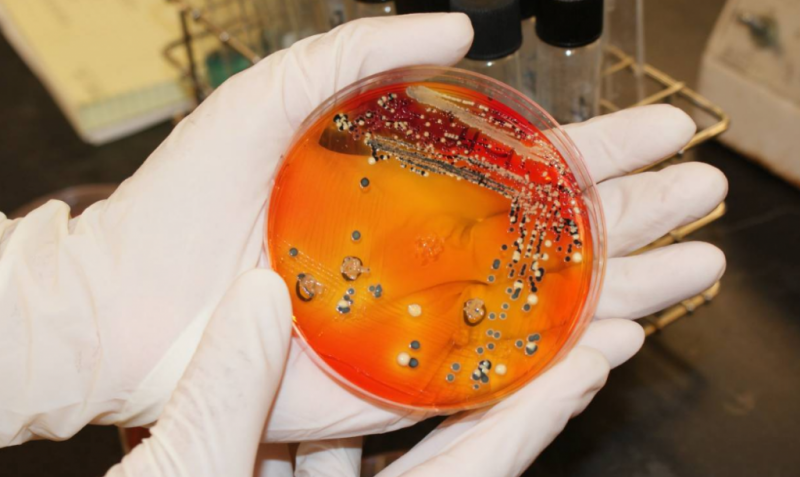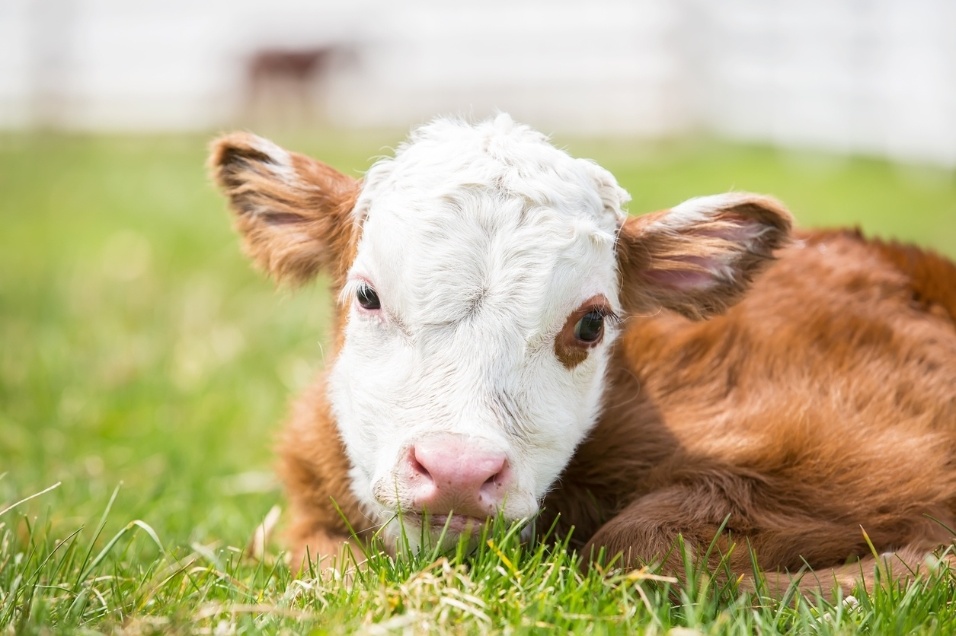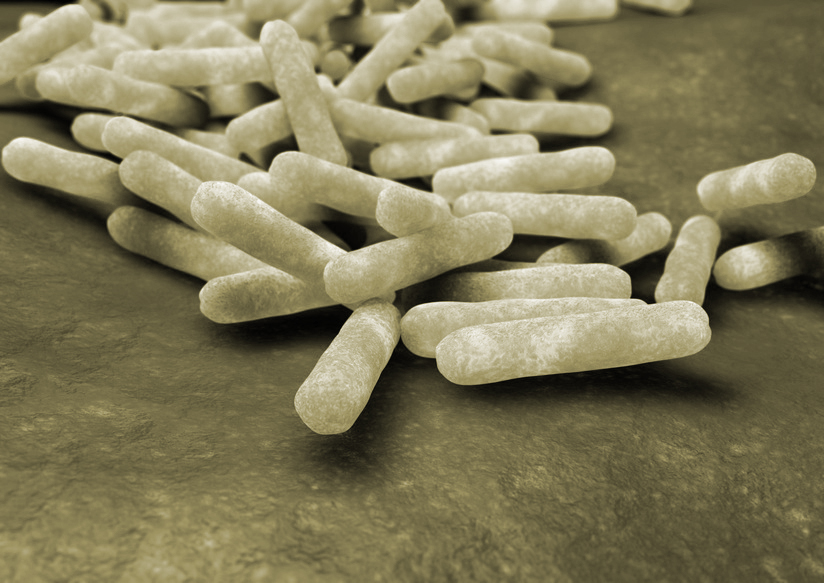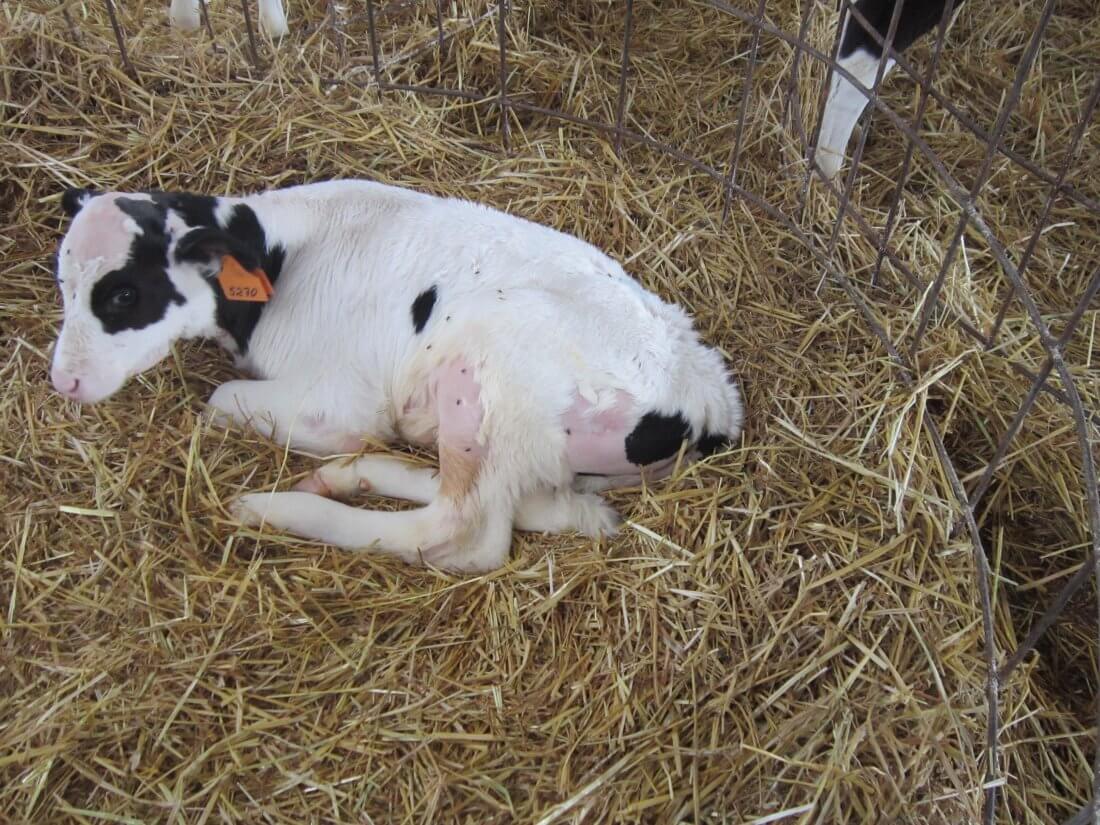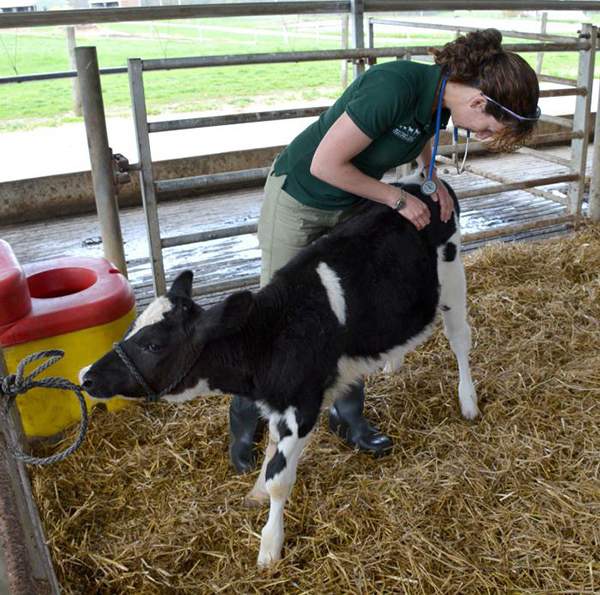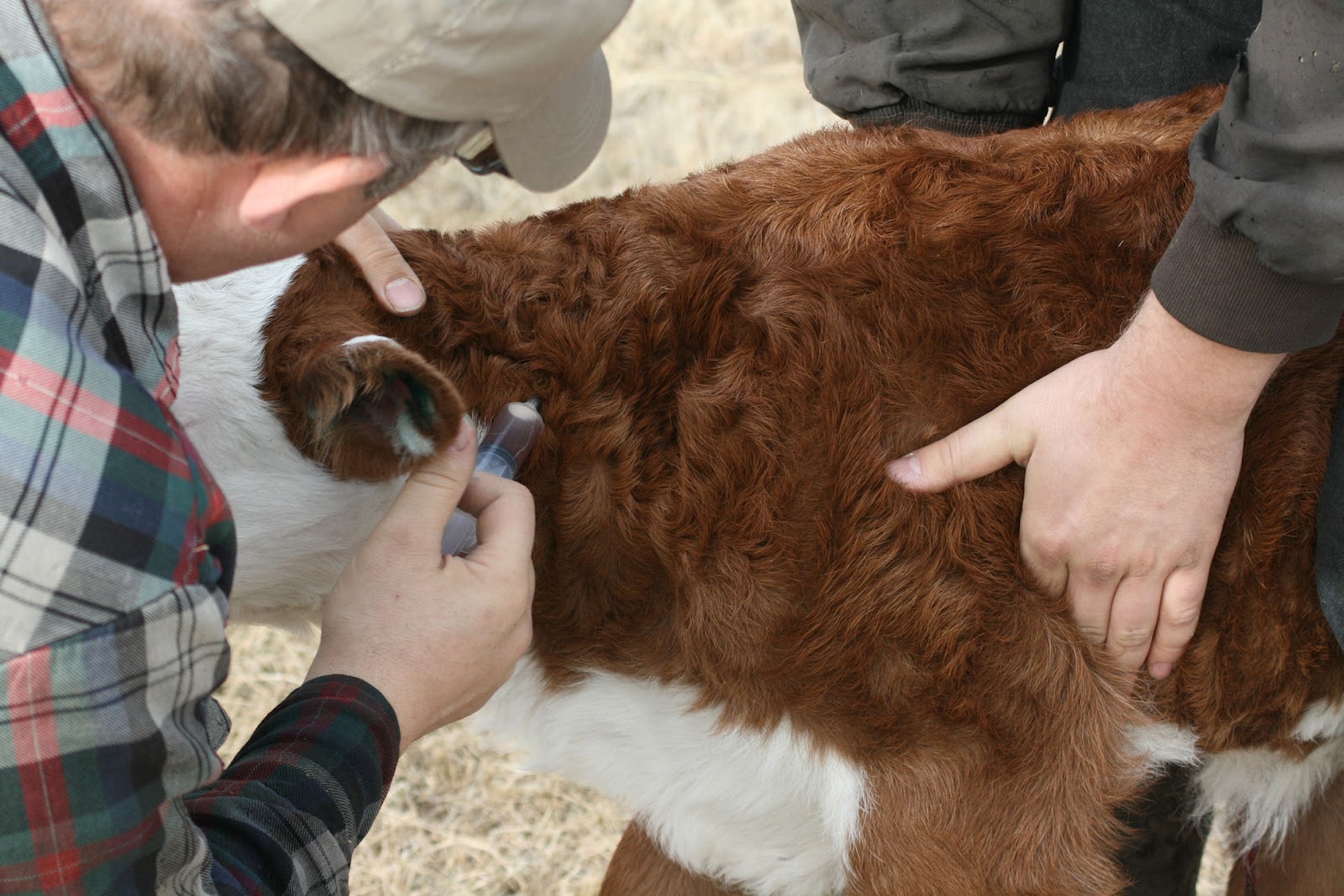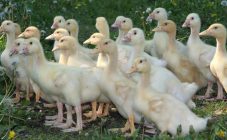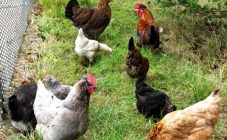Content:
In order for cattle breeding to be profitable, you need to take care of organizing the proper conditions for the young. Healthy offspring is the key to a successful livestock breeder, and various pathologies are a serious economic damage. Diseases in calves are well understood and can be prevented in most cases. It remains only to figure out what to do in the presence of certain symptoms and how to prevent the development of pathology.
General rules for the care of calves
From the very birth of young animals, care must be taken to ensure that the room where the animals are kept is clean, spacious and warm enough to have good ventilation. With poor sanitation on the farm, newborn calves can develop umbilical sepsis, accompanied by fever, swelling and soreness of the problem area. This disease is treated with antibiotics like bicillin and tetracycline. But it is much easier to prevent it. To do this, you just need to process the umbilical cord with sterile material.
Newborn calves, and even older individuals, have problems associated with being in the fresh air. For example, this is a sunstroke in a calf, the signs of which are a decrease in muscle tone, unsteadiness of gait, sweating, and rapid breathing. Treatment consists in moving the animals under a canopy and injecting glucose with caffeine intravenously. But in general, care must be taken to ensure that the young are not exposed to sunlight for too long.
When animals are kept loose, there is a high risk of injury. To prevent this from happening, calves are dehydrated. This can be done thermally or chemically. The first one is considered to be more secure because it is technically simple. In 3-6-week-old calves, the horny tubercles are cauterized with a special electric instrument. The chemical method is more complicated - an alkaline composition is rubbed in the area of the tubercles. While this is a relatively painless option, there is always a risk of eye contact. The surgical method can only be used by a veterinarian.
Calf diseases
There are a wide variety of diseases in calves associated with both improper care and bacterial or viral infections. Some of them are typical for all breeds of domestic animals, while others are only for cattle. All these pathologies manifest themselves with various symptoms. A high temperature usually indicates the presence of a bacterial or inflammatory disease. But constipation or vomiting in a calf can be a symptom of parasitic infestation, for example, in the presence of worms. Dozens of species of such organisms are known to parasitology, so in each case it is necessary to be tested.
The presence of blood impurities in the urine indicates an inflammatory disease of the genitourinary system. White feces in a calf is a reaction to E. coli infection. And rhinotracheitis can be accompanied by cough and serous discharge from the respiratory system. It is also possible frothy salivation, which is the most common symptom.
In any of these cases, it is not enough to read the description of the disease and compare the symptoms, you need to consult a specialist. But owners should be able to provide first aid even before being examined by a veterinarian. To do this, you do not need to read monographs or write a thesis project - just know the main points.
Salmonellosis
Calf salmonellosis is a common bacterial disease. Its epizootology is as follows: the disease affects mainly calves under the age of 2 months. Older individuals get sick less often, their life is not in danger. The causative agents of this infection (bacteria of the genus Salmonella) are excreted in the milk, saliva, urine and feces of sick animals and, as a result, end up in water, feed, bedding. So this disease is transmitted to other animals, getting into the body by the alimentary route, that is, through the digestive tract. Particularly susceptible to this disease are those calves that live in poor conditions - in cramped, poorly cleaned rooms.
The first symptoms of salmonellosis appear in 1-3 days from the moment of infection, in some cases after a week, it all depends on natural immunity. The disease can occur in acute, subacute and chronic forms. Symptoms of acute salmonellosis are as follows:
- the calf becomes lethargic and sleepy, prefers to lie down all the time;
- body temperature is increased from 40-41 ° С;
- rapid breathing;
- mucus or runny discharge from the nose;
- the animal loses its appetite;
- on the second or third day, diarrhea begins, sometimes blood impurities are visible in the feces.
The disease can affect the kidneys, then urination becomes difficult, heart failure develops. With a severe course of salmonellosis, a coma can occur and, after it, a lethal outcome. With a mild course of the disease, it can turn into a subacute and chronic form. The first symptoms are similar to those listed above. In chronic cases, additional signs appear that resemble manifestations of pneumonia - cough, mucopurulent discharge, etc. In any of these forms, the animal may die if appropriate treatment is not prescribed.
Salmonellosis is treated with antibiotics, most often drugs such as chloramphenicol, syntomycin, tetramycin and neomycin are used (it is especially effective for pneumonia). The drug is prescribed by a doctor after testing for the sensitivity of bacteria to its active ingredient. The dosage is calculated depending on the weight, on average 0.02-0.04 g of the active substance per 1 kg of body weight. The treatment course can be of different duration, usually up to 10 days.
A polyvalent antitoxic serum is also prescribed, which binds and neutralizes bacteria and the toxins they produce. This drug is also used for prophylaxis to boost immunity. The agent is injected intramuscularly, the dosage is also calculated depending on the weight of the calf.
If 2 doses of serum do not help, it may mean that the calf is not having salmonellosis, but another disease.
White muscle disease
White muscle disease in calves can occur at an early age, sometimes even in the first days after birth, but rarely in animals older than a year. With this pathology, all types of metabolism are disturbed in animals - lipid, mineral, carbohydrate. As a result, certain changes occur in the muscles, the disease can be accompanied by myopathy and dystrophy. In some cases, damage to the heart muscle occurs. The probability of death is very high - up to 60%.Therefore, if there is a suspicion that this is a white muscle disease of calves, treatment should be started immediately.
This disease affects skeletal muscle symmetrically. A specialist may recognize symptoms such as an enlarged heart or swelling of the subcutaneous tissue. But in the acute stage, there are more pronounced manifestations:
- muscle tremors;
- loss of strength and apathy;
- violation of gait, in some cases paralysis;
- rapid breathing;
- bloating.
In the subacute form, the symptoms are the same, only less pronounced. Appetite disappears, wheezing appears when breathing, pneumonia may develop. In addition, there is a chronic form. It usually occurs in animals older than 3 months. The clinical manifestations are the same, but developmental lag is also noticeable.
In any case, be sure to contact your veterinarian. The specialist will make the diagnosis after carrying out the basic diagnostics - ECG and X-ray. There is no specific treatment as such, the calves are simply given selenium preparations, amino acids, protein hydrolysates and various vitamins are added.
Paratyphoid
One of the most common bacterial diseases is paratyphoid fever in calves. It is caused by a certain type of bacteria, mainly Salm.Enteritidis and Salm.typhi murium. Their main feature is good resistance to various drugs. They are destroyed in various ways, for example, a lysol solution is used for surface treatment. But boiling the problem will not work. Paratyphoid bacteria produce toxins that are highly heat-resistant. For humans, they are also dangerous, since when eating contaminated meat, severe poisoning is possible.
It also happens that infection occurs a little later, when pathogens enter the body with contaminated milk, through dirty dishes or bedding. The incubation period is 5 to 14 days.
Typical symptoms:
- heat;
- indigestion, and often it is diarrhea with traces of blood;
- hot scalp, although limbs and ears remain cold.
Animals become lethargic, lie on the bed for a long time, they can be annoyed by a dry cough. In the chronic form of the disease, swelling of the joints is possible.
Treatment begins with the mandatory isolation of the diseased calf from the herd. It is very important to sanitize the premises. Only a doctor can diagnose and prescribe treatment. However, in general, it should be noted that antitoxic sera or bacteriophages are used. The latter are usually prescribed as an oral agent, they are given in 50 ml 2 or 3 times a day. If the disease is severe, the veterinarian can double this dose. Treatment with terramycin and furazolidone also showed good results. The latter is prescribed in a volume of 3-8 mg of active ingredient per kilogram of body weight. The course administration is shown by the oral method simultaneously with chloramphenicol and sulgin, mixing them with food. Nicotinic acid, 100 mg for each kilogram of feed, will help speed up recovery.
Cryptosporidiosis
Cryptosporidiosis of calves is a parasitic disease, in which the simplest microorganisms infect the digestive tract, as a result of which the digestive and absorption functions are disturbed. The respiratory system and the immune system can also suffer. The peak of the disease usually occurs in late winter and early spring, when the immune system is weakened. Sources of infection with protozoa of the genus Cryptosporidium can be adult animals in which the disease is asymptomatic, as well as rodents and mosquitoes.
The incubation period lasts on average 3-7 days. At first, the calves refuse to feed, later they may develop diarrhea, in severe cases, severe weight loss occurs and the body becomes dehydrated.
Other diseases of calves
Of the other diseases, worms in calves are the most common. They are manifested by both constipation and diarrhea, bloating, a sharp change in the smell of urine, and lack of appetite. At the same time, the calf may take an interest in inedible items, including its own excrement. This disease is treated with anthelmintic drugs. They are prescribed by the veterinarian based on the analysis data. Most often these are drugs such as tetramisole.
A large group of diseases is coccidiosis or eimeriosis. These terms denote protozoal diseases of cattle. For adults, the disease is asymptomatic. It can be fatal to calves. The classic symptom at the initial stage, which lasts about a week, is that the animal gets tired quickly, its gastrointestinal tract is disturbed, the feces are slightly liquefied, later they acquire a greenish tint and an unpleasant odor. Then severe diarrhea begins, and the body temperature rises greatly. When the situation is neglected, there may be traces of blood in the stool. Sick calves are isolated, the digestive tract is cleaned with a hot enema (the procedure is repeated 2-3 times a day). Of the drugs, ichtargan is recommended, the dosage is prescribed by the veterinarian.
Simultaneously with salmonellosis, calves may develop pseudomonosis. Animals can get sick literally from birth to six months of age.
Most often, infection occurs through the mother, since the causative agent of the infection penetrates the placental barrier. The etiology of pseudomonosis shows that the culprit is the gram-negative bacillus Pseudomonas aeruginosa. For disinfection with this disease, chlorine-containing preparations are used, since pathogenic microorganisms die under their action.
Symptoms of pseudomonosis are a slightly elevated temperature, decreased appetite, mucus discharge from the respiratory system, diarrhea, and there may be blood impurities in the fecal masses. You need to understand why such symptoms appear, to differentiate them from other diseases, and this requires the help of a veterinarian. In case of an unfavorable course of the disease, a lethal outcome is possible, and then the pathological report will show hemorrhage in all internal organs. It is very important to start treatment on time, it is generally recommended to take antibiotics such as vancomycin or cephaloxime.
A calf hernia is common. It has distinct external signs, looks like a protrusion, a little painful, but soft to the touch. Other symptoms are decreased appetite, impaired digestion, and a slight increase in temperature. Conservative treatment is rarely used, it consists in the fact that the veterinarian corrects such a protrusion manually, and the farmer provides the animal with peace. More often, this reduction is done surgically.
Sometimes the thymus gland in the calf is affected, including as a result of injuries. But most often, the defeat occurs due to a lack of trace elements or inflammatory processes. Treatment is symptomatic, iodine and selenium are added to the diet.
Finally, calves often have colic, the symptoms and treatment of which should be known to every farmer, because they can be dealt with without the invitation of a veterinarian. They are mainly manifested by bloating, diarrhea, and pain. This often happens when the calf is switched to roughage too early.Treatment mainly consists of gastric lavage, followed by drinking plenty of fluids and castor oil (up to 500 ml).
Preventive measures
Creating the right conditions for keeping calves will help prevent disease. Good ventilation, normal air humidity, ample room to avoid crowding - this is enough to strengthen the immune system and avoid disease.
It should be remembered that white muscle disease often develops in those calves whose mothers do not receive nutrients during pregnancy. Therefore, the most important preventive measure is the use of feed enriched with selenium, proteins and vitamin A. There is also a theory that white muscle disease in young animals is the result of a lack of vitamin E. So, you need to ensure that the calf receives it in accordance with physiological norms. For this purpose, tocopherol is administered to newborns.
It is more difficult to treat this disease than to prevent it. For the prevention of paratyphoid fever, a drug such as calomel is widely used. Its dosage is calculated individually, as well as the recommended amount of another drug - novarsenol. To prevent this disease, special cardiovascular drugs and laxatives are sometimes prescribed. In any case, you cannot give them without a veterinarian's appointment. Also for prophylactic purposes, a formulated leaven vaccine is used.
Advice and guidance from experienced veterinarians
When breeding cattle, some non-standard situations can constantly arise that beginners in this field cannot always resolve on their own. Then the advice of more experienced breeders and veterinarians will come in handy.
What to do if a calf ate a plastic bag sounds ridiculous, but in fact the question is relevant. Much depends on its size. In some cases, a small package will come out on its own. But polyethylene in the body will not decompose, and there is always a risk that it will become a mechanical obstacle in the stomach. So it is better to contact a veterinarian, he will be able to assess the risk of such a development of events, if necessary, have an operation. Some livestock breeders advise this folk method. If the bag is small, you can help the animal by adding a few drops of ammonia to your regular drink to soften the bag. The same method is used if the bag is swallowed by a cow, as this also happens with adult animals. But it is better to consult a veterinarian after all.
But what if the calf has a bump on its neck? You need to watch her for a while. Perhaps it's just an insect bite. But if it does not go away, you should consult a doctor, because such a lump may be a sign of actinomycosis - a chronic disease characterized by lesions of the lymph nodes and the formation of abscesses on the neck. This condition is caused by a bacterial infection, so your veterinarian will prescribe antibiotics.
The calf grinds its teeth and does not eat anything, what should I do in this case? This can be caused by a variety of reasons - a lack of vitamins, and gastroenteritis, and the white muscle disease described above, and a lack of chewing gum. In some cases, it is enough to simply add roughage to the diet, in others call a doctor to prescribe a specific treatment.
In any case, even an experienced breeder cannot always make a correct diagnosis. If you are not sure what kind of disease caused certain symptoms, it is better to contact your veterinarian. A qualified specialist, based on the clinical picture and the examination performed, will be able to make an accurate diagnosis and prescribe a suitable treatment.
